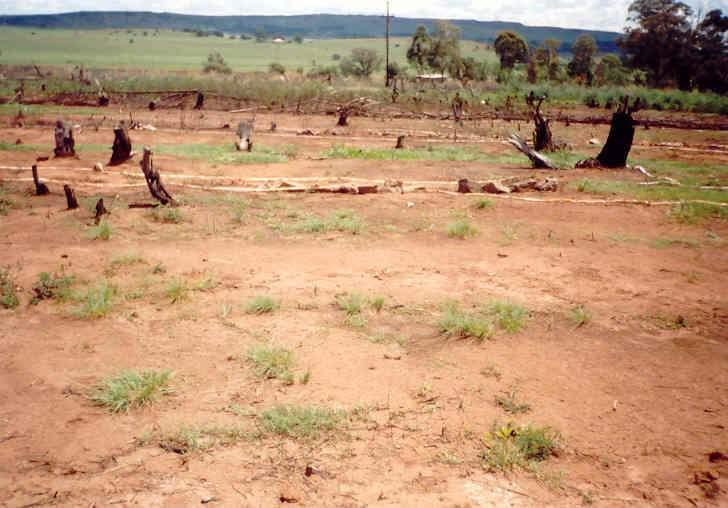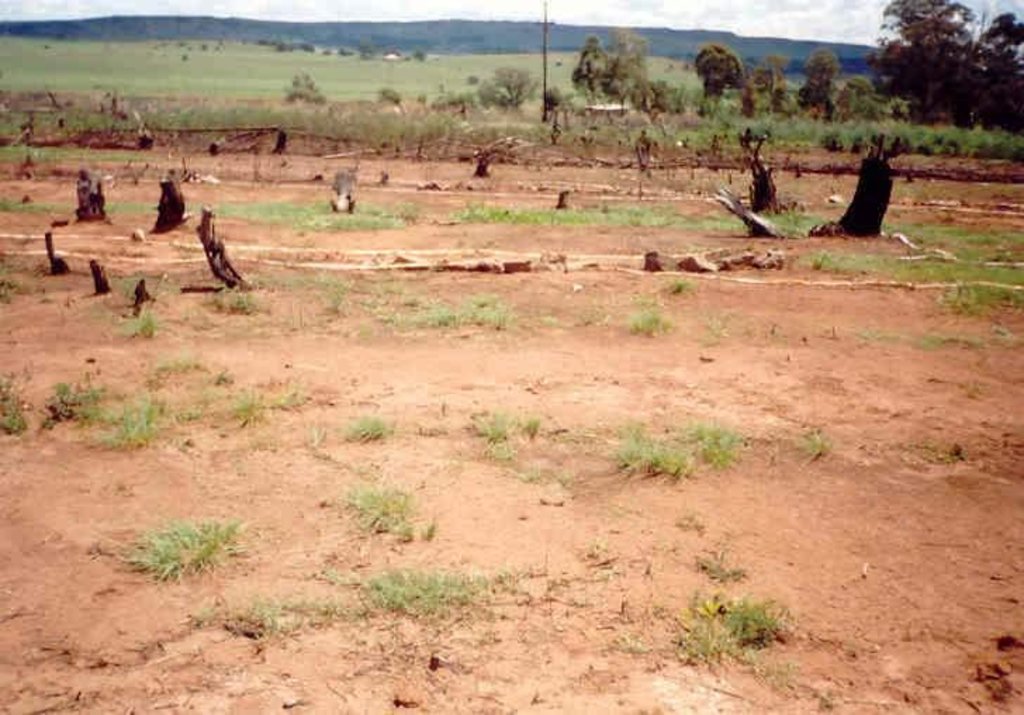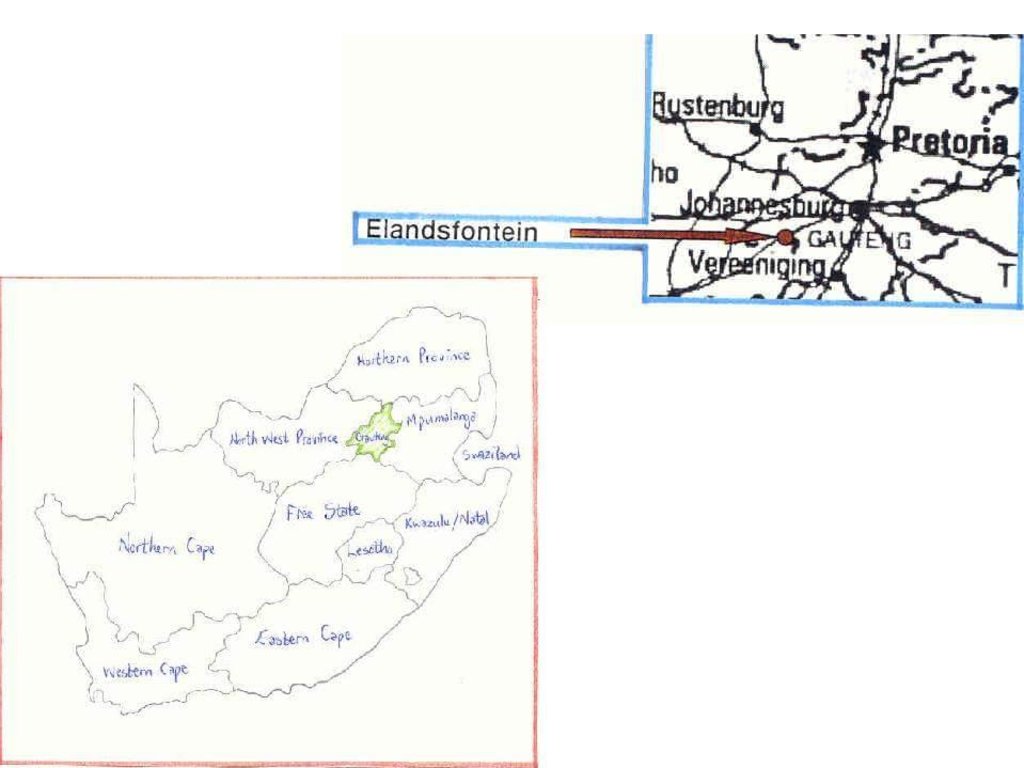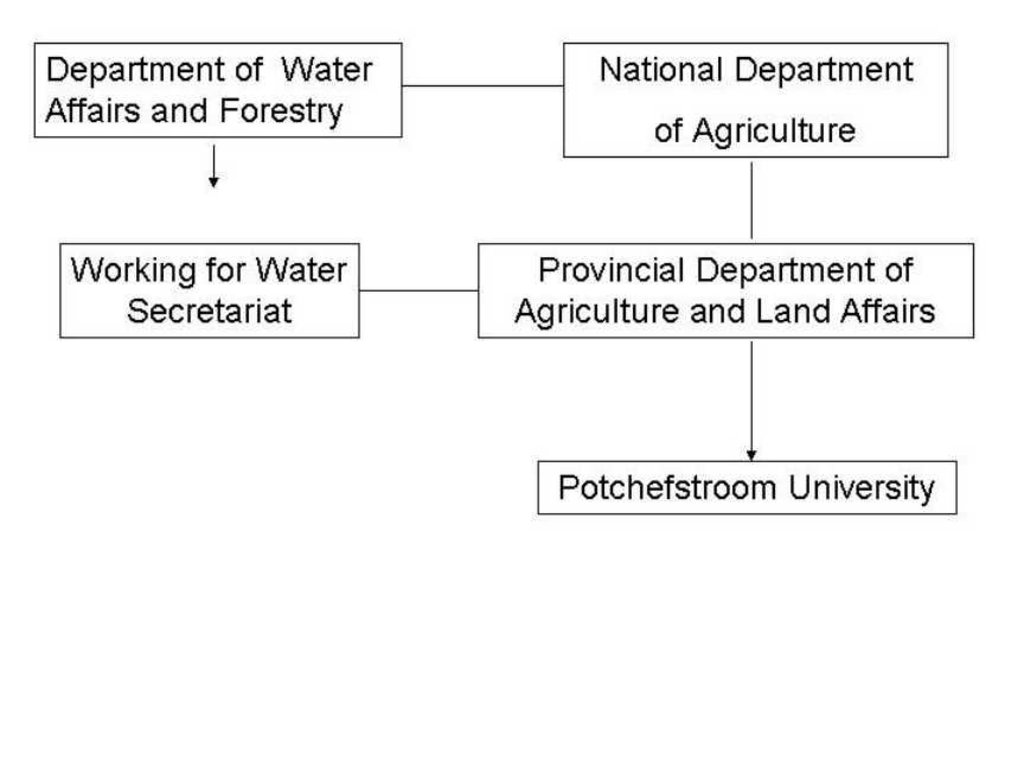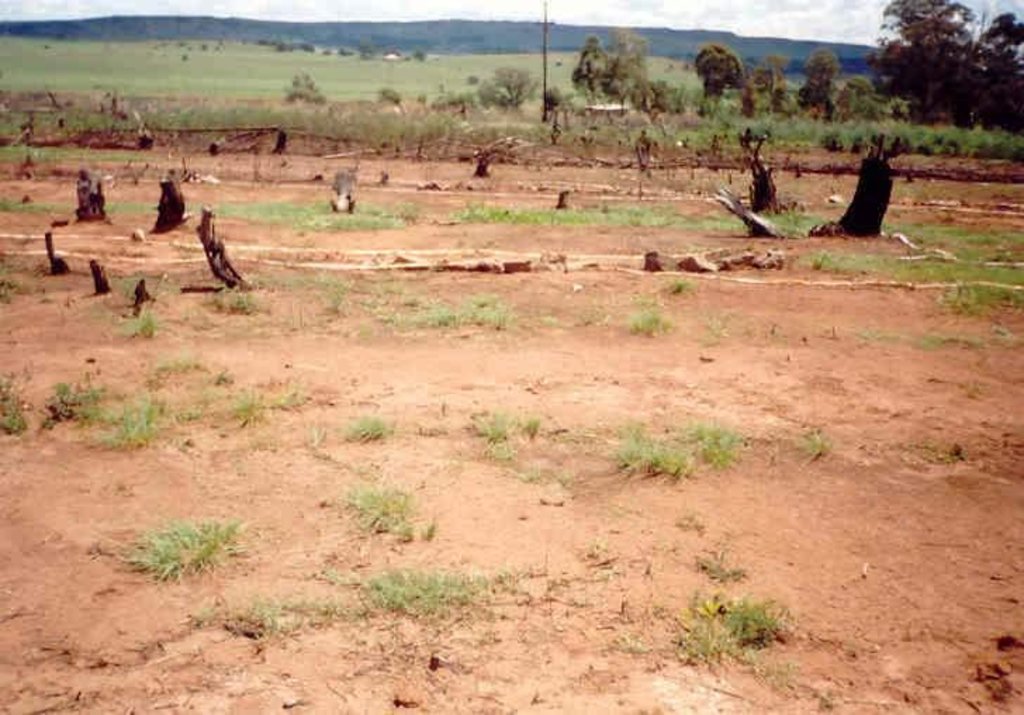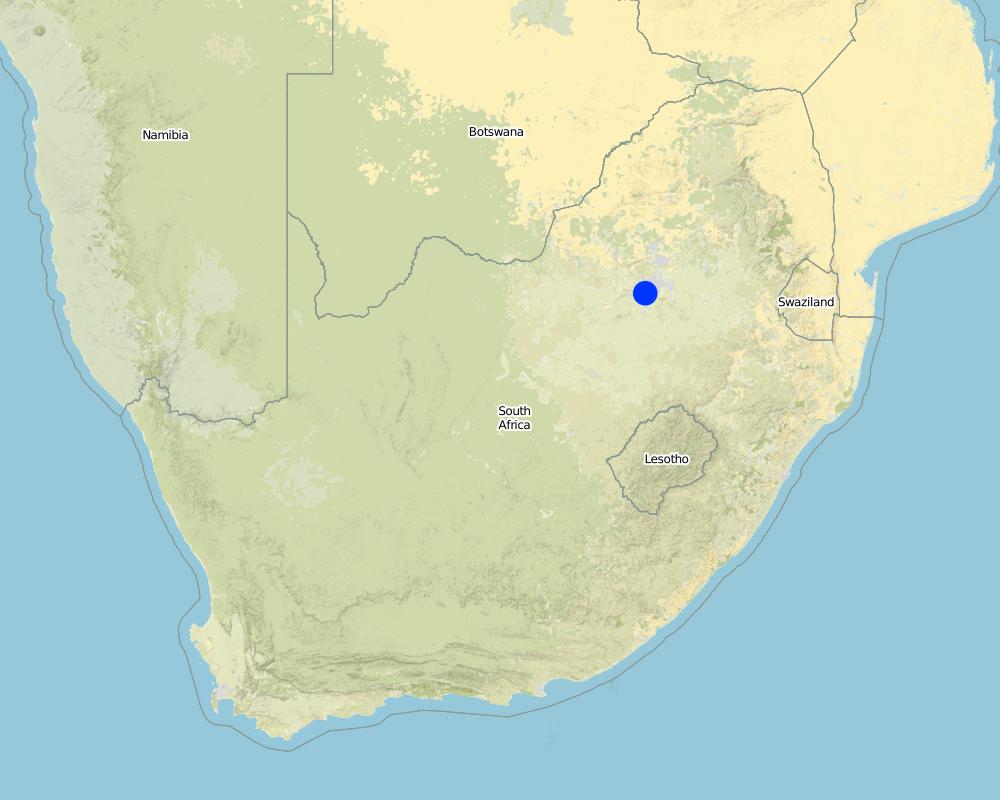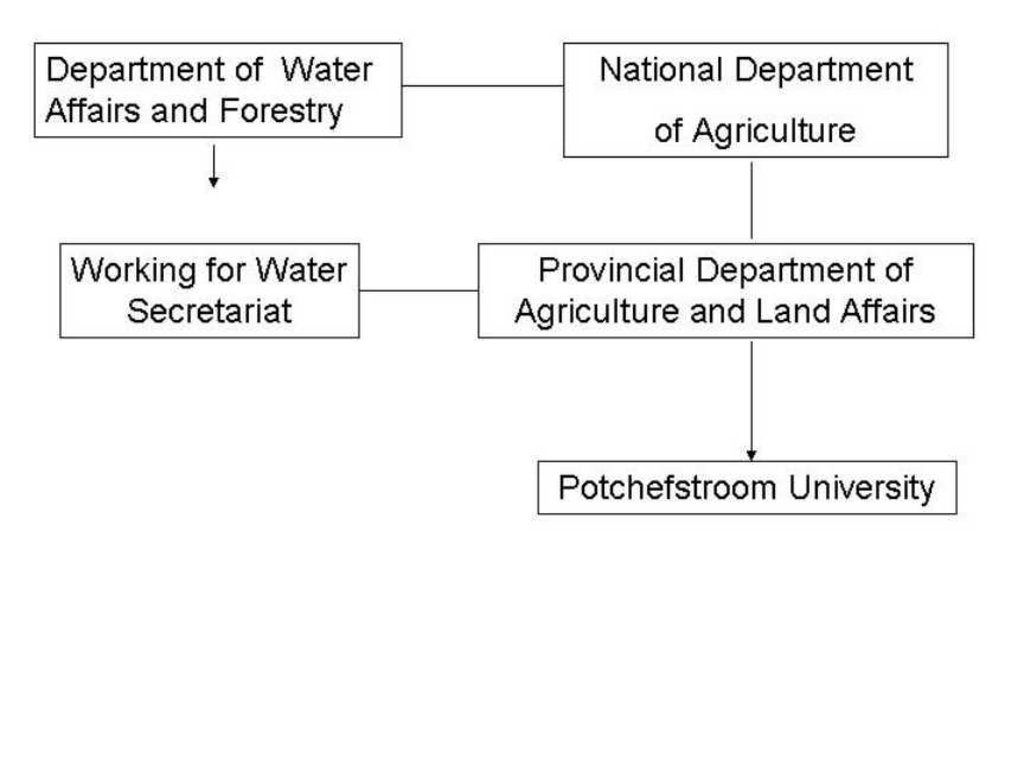Working for Water [جنوب أفريقيا]
- تاريخ الإنشاء:
- تحديث:
- جامع المعلومات: Klaus Kellner
- المحرر: –
- المُراجع: Fabian Ottiger
approaches_2338 - جنوب أفريقيا
عرض الأقسام
توسيع الكل طي الكل1. معلومات عامة
1.2 تفاصيل الاتصال بالأشخاص الرئيسيين لمصدر المعلومات والمؤسسات المعنية بتقييم وتوثيق النهج
الشخص (الأشخاص) الرئيسي لمصدر المعلومات
متخصص في الإدارة المستدامة للأراضي:
Barac Anuschka
Georg-August-Universität Göttingen
Wilhelmsplatz 1, 37073 Göttingen
ألمانيا
متخصص في الإدارة المستدامة للأراضي:
متخصص في الإدارة المستدامة للأراضي:
de Wet Sarone
Potchefstroom University for Christian Higher Education
جنوب أفريقيا
متخصص في الإدارة المستدامة للأراضي:
Fulls Erich
Department of Agriculture (Gauteng)
جنوب أفريقيا
متخصص في الإدارة المستدامة للأراضي:
Lepin Edward
جنوب أفريقيا
اسم المؤسسة (المؤسسات) التي سهلت توثيق/تقييم النهج (إذا كان ذلك على صلة)
Georg August Universität Göttingen (Georg August Universität Göttingen) - ألمانيااسم المؤسسة (المؤسسات) التي سهلت توثيق/تقييم النهج (إذا كان ذلك على صلة)
Gauteng Department of Agriculture and Rural Develo (Gauteng Department of Agriculture and Rural Develo) - جنوب أفريقيااسم المؤسسة (المؤسسات) التي سهلت توثيق/تقييم النهج (إذا كان ذلك على صلة)
Potchefstroom Universiteit vir CHO (Potchefstroom Universiteit vir CHO) - جنوب أفريقيا1.3 الشروط المتعلقة باستخدام البيانات الموثقة من خلال WOCAT
يوافق جامع المعلومات والشخص (لاشخاص) الرئيسي لمصدر المعلومات على الشروط المتعلقة باستخدام البيانات الموثقة من خلال WOCAT:
نعم
1.4 المراجع الخاصة باستبيان(استبيانات) تقنيات الإدارة المستدامة للأراضي
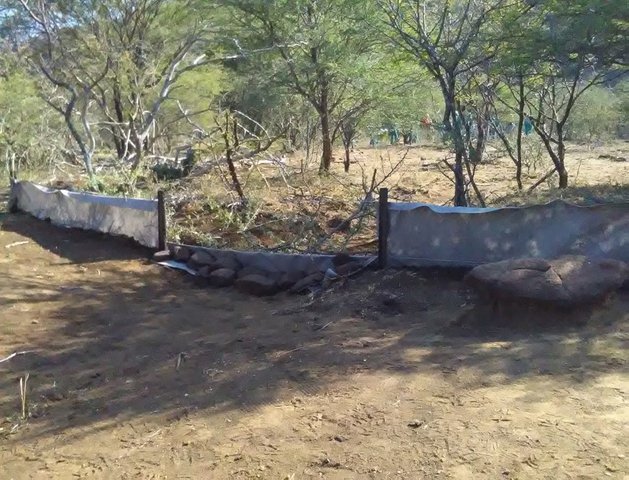
Silt fences to trap sediment in areas affected … [جنوب أفريقيا]
Silt fences together with brush packing were introduced to reduce sediment transport and restoration of gully erosion in the Potlake nature reserve, Limpopo Province, South Africa.
- جامع المعلومات: Dirk Pretorius
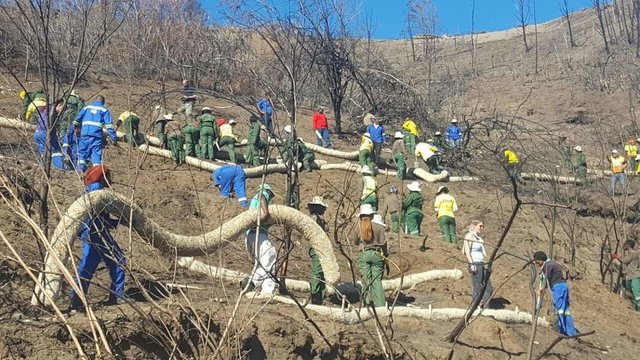
Use of sediment retention fibre rolls (SRFR) and … [جنوب أفريقيا]
Sediment retention fibre rolls (SRFR) and erosion blankets were deployed to stabilise steep slopes after vegetation cover was destroyed by fire, near the town of Knysna in the Western Cape Province, South Africa
- جامع المعلومات: Dirk Pretorius
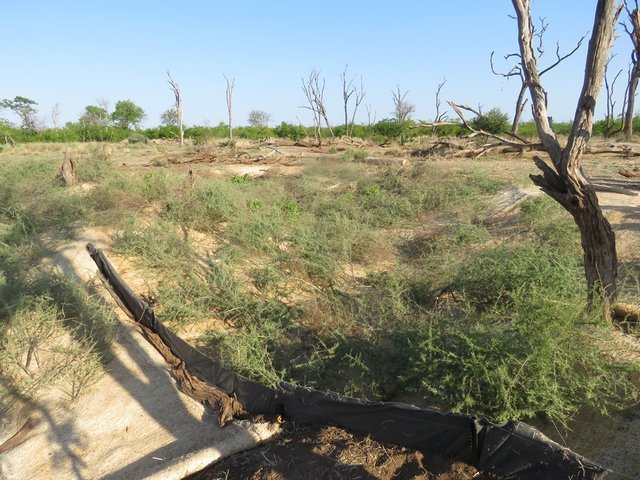
Reshaping of gully erosion through integration of silt … [جنوب أفريقيا]
The rehabilitation of active gully erosion by re-sloping the banks of the gully in an effort to manage the energy of the water entering the system. Bare soil is protected from erosion by covering it with erosion blankets, brush packing and the establishment of silt fences.
- جامع المعلومات: Dirk Pretorius
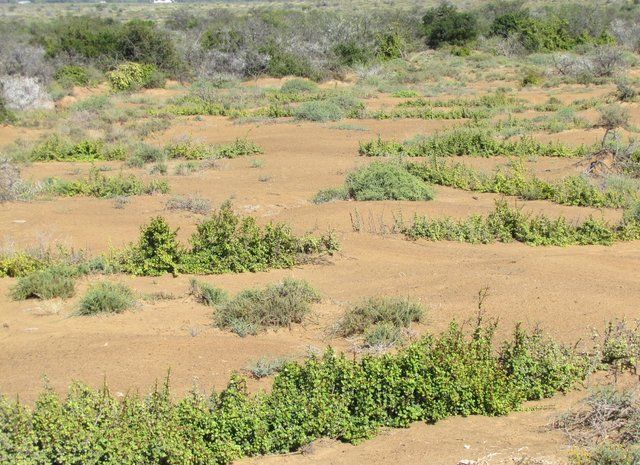
Spekboom (Portulacaria afra) planting within riplines for thicket … [جنوب أفريقيا]
The restoration of the thicket biome in the Eastern Cape is assisted by planting ‘spekboom’ (elephant bush) (Portulacaria afra), an indigenous succulent plant within contour lines/riplines on degraded hillslopes. The increased vegetation cover reduces runoff and soil loss.
- جامع المعلومات: Dirk Pretorius
2. وصف نهج الإدارة المستدامة للأراضي
2.1 وصف موجز للنهج
Government funded restoration/rehabilitation initiative as part of Working for Water project. Aim was to eradicate alien invasive.
2.2 وصف تفصيلي للنهج
وصف تفصيلي للنهج:
Aims / objectives: The aim was to eradicate alien invasive species and then to revegetate the area in order to recover the natural grazing for livestock. Community participation plays a very important role, making them aware of the importance of restoring degraded rangelands. The approach for applying SWC technologies included making use of community members (at a daily wage) to carry out the labour intensive technologies and thus also playing a part in increasing community awareness.
2.3 صور عن النهج
2.5 البلد/المنطقة/المواقع التي تم تطبيق النهج فيها
البلد:
جنوب أفريقيا
المنطقة/الولاية/المحافظة:
Gauteng
Map
×2.6 تواريخ بدء وإنهاء تنفيذ النهج
أشر إلى سنة البدء:
1996
سنة الإنهاء (إذا لم يعد النهج مطبقًا):
2000
2.7 نوع النهج
- قائم على مشروع/برنامج
2.8 الغايات/الأهداف الرئيسية للنهج
The Approach focused mainly on SLM with other activities (Job creation and capacity building of SWC technicians. Improvement of grazing and vegetation cover, in order to conserve soil and water.)
On-site or on-farm technology application, thus making community aware of positive effect of restoration technology. To see to it that job creation occurs in surrounding communities.
The SLM Approach addressed the following problems: The evaluation of a restoration trail after the control of alien woody invasive vegetation in the Gauteng Province and to restore degraded rangeland to nearest original state before degradation took place (= improve grazing).
2.9 الظروف التي تمكن أو تعيق تنفيذ التقنية/التقنيات المطبقة بموجب النهج
توفر/الوصول إلى الموارد والخدمات المالية
- معيق
No funds available for restoration.
Treatment through the SLM Approach: Apply more cost effective approaches or apply for funds.
الإطار القانوني (حيازة الأراضي، وحقوق استخدام الأراضي والمياه)
- تمكين/تمكيني
The existing land ownership, land use rights / water rights helped a little the approach implementation: Land users did not liked what happened, do not think the approach will work. Some appreciation for what is being done.
المعرفة حول الإدارة المستدامة للأراضي، والوصول إلى الدعم الفني
- معيق
Equipment used is too labour intensive and take a lot of time.
Treatment through the SLM Approach: If enough funds were available, mechanical equipment could be used (faster and more effective).
غير ذلك
- معيق
Involvement of community.
Treatment through the SLM Approach: Negotiation and awareness programmes.
3. المشاركة وأدوار الأطراف المعنية
3.1 أصحاب المصلحة المعنيون بالنهج وأدوارهم
- مستخدمو الأراضي المحليون/المجتمعات المحلية
Working land users were work equally divided between men and women (Volunteers from communities for
- الحكومة الوطنية (المخططون، صانعو القرار)
DAF and Provincial Department of Agriculture (initiative an
- منظمة دولية
Funding
3.2 انخراط مستخدمي الأراضي المحليين/المجتمعات المحلية في المراحل المختلفة للنهج
| انخراط مستخدمي الأراضي المحليين/المجتمعات المحلية | حدد من شارك وصف الأنشطة | |
|---|---|---|
| المبادرة/التحفيز | سلبي | public meetings |
| التخطيط | سلبي | |
| التنفيذ | الدعم الخارجي | Mainly: responsibility for major steps; partly: casual labour |
| الرصد/التقييم | سلبي | |
| Research | سلبي | on-farm |
3.3 مخطط التدفق (إذا كان متاحًا)
3.4 اتخاذ القرار بشأن اختيار تقنية/تقنيات الإدارة المستدامة للأراضي
حدد من الذي قرر اختيار التقنية/التقنيات التي سيتم تنفيذها:
- متخصصون في الإدارة المستدامة للأراضي بمفردهم
اشرح:
directive (top-down). Identify by DARF.
Decisions on the method of implementing the SLM Technology were made by by SLM specialists alone (top-down). directive (top-down).
4. الدعم الفني وبناء القدرات وإدارة المعرفة
4.1 بناء القدرات/التدريب
هل تم تقديم التدريب لمستخدمي الأراضي / الأطراف المعنيين الآخرين؟:
نعم
حدد من تم تدريبه:
- مستخدمو الأراضي
- SWC specialists, extensionists/trainers
شكل التدريب:
- في العمل
- مناطق العرض
المواضيع المغطاة:
Ecological principles, restoration technologies.
4.2 خدمة استشارية
هل يملك مستخدمو الأراضي وصولا إلى خدمة استشارية؟:
نعم
حدد ما إذا كانت الخدمة الاستشارية متوفرة:
- في حقول مستخدمي الأراضي
- في مراكز دائمة
وصف/تعليقات:
Name of method used for advisory service: Demonstration; Key elements: Rural community appraisal, participatory rural approach; 1) Advisory service was carried out through: government's existing extension system. Extension staff: specifically hired project employees 3) Target groups for extension: technicians/SWC specialists; Activities: People in charge of field work etc.
Advisory service is inadequate to ensure the continuation of land conservation activities; Except for being inadequate, there are not enough funds available to continue the activities. Expert advise from specialists after evaluation is also needed to be adequate.
4.3 تعزيز المؤسسات (التطوير التنظيمي)
هل تم إنشاء أو تعزيز مؤسسات من خلال هذا النهج؟:
- نعم، قليلا
حدد المستوى (المستويات) التي تم فيها تعزيز أو إنشاء المؤسسات:
- محلي
حدد نوع الدعم:
- بناء القدرات/التدريب
4.4 الرصد والتقييم
هل يشكل الرصد والتقييم جزءا من النهج؟:
نعم
التعليقات:
bio-physical aspects were regular monitored through measurements
economic / production aspects were ad hoc monitored through observations
area treated aspects were regular monitored through measurements
no. of land users involved aspects were ad hoc monitored through observations
management of Approach aspects were ad hoc monitored through observations
There were no changes in the Approach as a result of monitoring and evaluation: One site establishment for restoration purposes, thus no changes where made because no future project is planned in area in near future.
4.5 البحوث
هل كانت البحوث جزءًا من النهج؟:
نعم
حدد المواضيع:
- علم الايكولوجيا
- تكنولوجيا
أعط تفاصيل إضافية وأشر إلى من قام بالبحوث:
Soil related research and analyses and also restoration technology application information.
Research was carried out on-farm
5. التمويل والدعم المادي الخارجي
5.1 الميزانية السنوية لمكون الإدارة المستدامة للأراضي في النهج المذكور
إذا لم تكن الميزانية السنوية الدقيقة معروفة، قم بالإشارة إلى نطاقها:
- < 2000
التعليقات (على سبيل المثال المصادر الرئيسية للتمويل/الجهات المانحة الرئيسية):
Approach costs were met by the following donors: international (Donors): 10.0%; government (national - Water Affairs (DAF)): 80.0%; national non-government (University): 10.0%
5.2 الدعم المالي/المادي المقدم لمستخدمي الأراضي
هل حصل مستخدمو الأراضي على دعم مالي/ مادي لتنفيذ التقنية/ التقنيات؟:
نعم
5.3 إعانات لمدخلات محددة (بما في ذلك العمالة)
- معدات
| حدد المدخلات التي تم دعمها | إلى أي مدى | حدد الإعانات |
|---|---|---|
| الآلات | ممول بالكامل | |
| أدوات | ممول بالكامل | |
- زراعة
| حدد المدخلات التي تم دعمها | إلى أي مدى | حدد الإعانات |
|---|---|---|
| بذور | ممول بالكامل | |
| أسمدة | ممول بالكامل | |
| Biocides | ممول بالكامل | |
إذا كان العمل من قبل مستخدمي الأراضي مدخلاً جوهريًا، فهل كان:
- مدفوع نقدا
التعليقات:
Job creation and community involvement.
5.4 الائتمان
هل تم توفير ائتمان في إطار نهج أنشطة الإدارة المستدامة للأراضي؟:
كلا
6. تحليل الأثر والتصريحات الختامية
6.1 آثار النهج
هل ساعد النهج مستخدمي الأراضي على تنفيذ وصيانة تقنيات الإدارة المستدامة للأراضي؟:
- لا
- نعم، قليلا
- نعم، باعتدال
- نعم، إلى حد كبير
To layout contours to prevent erosion and serve as catchment for water. Establishment of grass also served as stabiliser to prevent erosion and also serves as fodder in addition.
Did other land users / projects adopt the Approach?
- لا
- نعم، قليلا
- نعم، باعتدال
- نعم، إلى حد كبير
Unsure.
6.3 استدامة أنشطة النهج
هل يمكن لمستخدمي الأراضي المحافظة على استدامة ما تم تنفيذه من خلال النهج (بدون دعم خارجي)؟:
- نعم
إذا كانت الإجابة بنعم، صف كيف:
Most land users benefited from the approach and they are either in direct vicinity or were part of the job creation. They know the benefit of the results from restoration obtained and this might have inspired them to carry on. If some funds were to be available (from the land users themselves) they might be able to continue the approach by themselves and they know they will benefit from it.
6.4 نقاط قوة/مزايا النهج
| نقاط القوة/ المزايا/ الفرص من وجهة نظر مستخدمي الأراضي |
|---|
| Job creation. (How to sustain/ enhance this strength: Appoint members could involve rest of community to help look after restored area (improved grazing).) |
| Training. (How to sustain/ enhance this strength: Community members learnt a lot about conservation and they can now carry on with it on their own (they have the knowledge).) |
| نقاط القوة/ المزايا/ الفرص من وجهة نظر جامع المعلومات أو غيره من الاشخاص الرئيسيين لمصدر المعلومات |
|---|
| Job creation. (How to sustain/ enhance this strength: Appoint a community member to look after the area and see that if is managed.) |
| Awareness and training. (How to sustain/ enhance this strength: Personal improvement to understand how to take care of land and how to improve it.) |
| Inter-cultural co-operation. |
6.5 نقاط الضعف/ العيوب في المنهج وطرق التغلب عليها
| نقاط الضعف/ المساوىء/ المخاطر من وجهة نظر جامع المعلومات أو غيره من الاشخاص الرئيسيين لمصدر المعلومات | كيف يمكن التغلب عليها؟ |
|---|---|
| Not enough communication between specialists and community members on important factors. | Better communication from start of approach or project. |
| Linguistic abilities not sufficient (especially on side of specialists). | To obtain some simple linguistic abilities, such as how to greet and ask approach related questions. |
| SWC technology application must not be built on job creation incentives (only), but must be sustainable in the long term without incentives (job creations) by the land users. |
7. المراجع والروابط
7.1 طرق جمع/مصادر المعلومات
- زيارات ميدانية، مسوحات ميدانية
- مقابلات مع مستخدمي الأراضي
الروابط والوحدات المواضيعية
توسيع الكل طي الكلالروابط

Silt fences to trap sediment in areas affected … [جنوب أفريقيا]
Silt fences together with brush packing were introduced to reduce sediment transport and restoration of gully erosion in the Potlake nature reserve, Limpopo Province, South Africa.
- جامع المعلومات: Dirk Pretorius

Use of sediment retention fibre rolls (SRFR) and … [جنوب أفريقيا]
Sediment retention fibre rolls (SRFR) and erosion blankets were deployed to stabilise steep slopes after vegetation cover was destroyed by fire, near the town of Knysna in the Western Cape Province, South Africa
- جامع المعلومات: Dirk Pretorius

Reshaping of gully erosion through integration of silt … [جنوب أفريقيا]
The rehabilitation of active gully erosion by re-sloping the banks of the gully in an effort to manage the energy of the water entering the system. Bare soil is protected from erosion by covering it with erosion blankets, brush packing and the establishment of silt fences.
- جامع المعلومات: Dirk Pretorius

Spekboom (Portulacaria afra) planting within riplines for thicket … [جنوب أفريقيا]
The restoration of the thicket biome in the Eastern Cape is assisted by planting ‘spekboom’ (elephant bush) (Portulacaria afra), an indigenous succulent plant within contour lines/riplines on degraded hillslopes. The increased vegetation cover reduces runoff and soil loss.
- جامع المعلومات: Dirk Pretorius
الوحدات المواضيعية
لا يوجد وحدات مواضيعية


